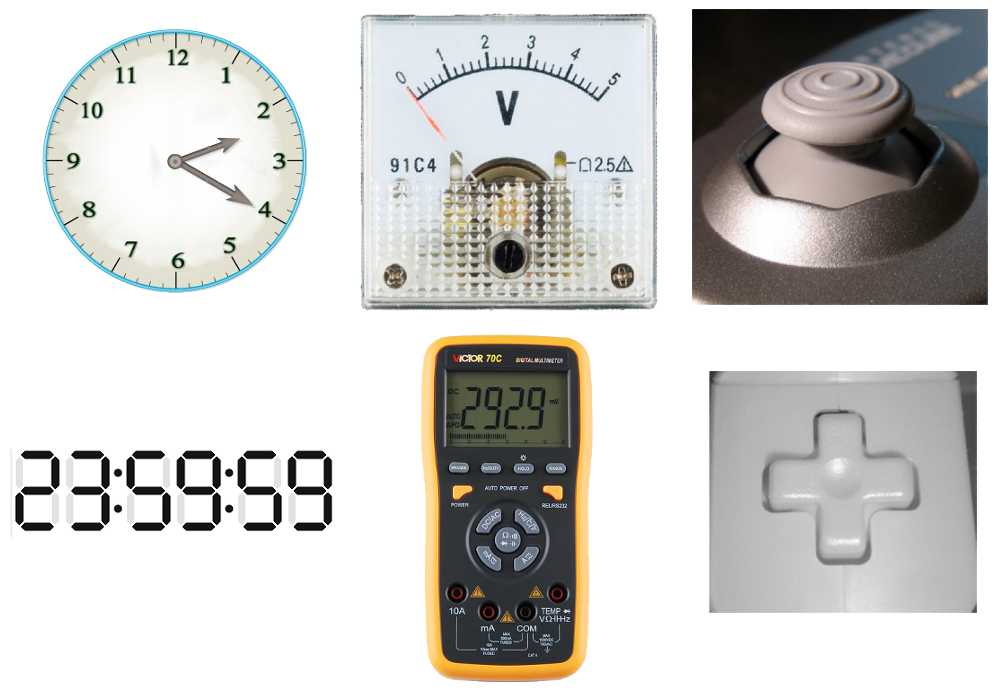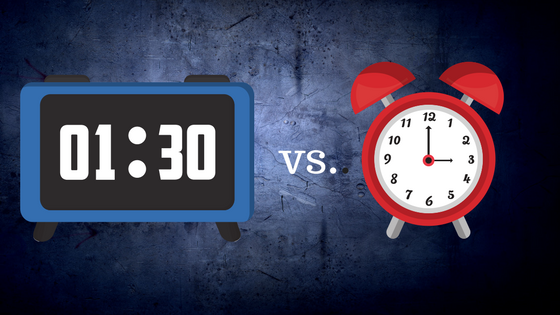
As your child matches the clocks on this printable, encourage him to talk about time and how times passes. Use this matching time printable to help your child connect these two ways to convey the time.īeing able to tell time with either a digital or analog clocks encourages flexible thinking. Of course, your child also needs to be able to confidently read a digital clock as well. Below we provide and breakdown two videos to help you teach your students this standard. It is usually battery or electricity powered. A digital clock is a clock which simply shows numbers to denote the time. 2 Videos to Help You Teach Common Core Standard: 1.MD.3. An analogue clock is a circular-faced clock with the numbers one to twelve around the outside and two hands, a shorter one to measure hours and a longer one to measure minutes. Understand the time terms o’clock and thirty. Relate analogue clock time to digital clock time, and vice versa. Teaching young children to read an analog clock builds number sense and a strong sense of time. Draw a minute and hour hands on a clock to the half hour and hour interval. An analog clock also helps children understand language such as "quarter past" or "quarter of" by seeing 60 minutes actually "cut" into four equal quarters. Watching the hands of a clock move can help your child better understand the concept of elapsed time. An analog clock allows young children to really see when five minutes has passed, which isn't possible with a digital clock. Reading a clock provides children with a visual representation of time passing.
#DIGITAL CLOCK VS ANALOG CLOCK HOW TO#
We're the ones who put the clocks there in the first place, and we can take into account the differences when we pick what kind of clock to place where.In today's digital world, is it still important for young children to learn how to read an analog clock? I strongly believe the answer is YES! Digital clocks, then, correlate with a more precise and specific experience of time than analog clocks.īut don't get the idea that it is all the clocks' doing, changing how we perceive time. It is more difficult to read what is not there, as to round 5:13 to 5:15, and say "quarter past five." The reverse is true of an analog clock - it is hard, sometimes impossible, to read the exact minute when a hand is between numbers, but it is quite easy to round to the nearest five minutes. Reading the numerals off a digital clock is very easy, and so you can know the exact minute (and sometimes second) displayed. Also, digital clocks emphasize the linear conception of time, as the hours advance from one to the next analog clocks imply a circular conception of time, as the hands move in a visualizable path that will eventually take them back to where they are now.Īdditionally, there is a difference in the precision of experienced time between these two types of clocks.

On a digital clock, the only visible time is the current one you can't even see where it was a few minutes ago (O'Malley 311). On an analog clock, the numbers are always there even when the hands are not pointing to them. What are the differences between the two? Aside from one being better for geometry and one perhaps simpler to read, it is important to recognize what one does not show. The second is generally a visual display of the numerals themselves. Sign up for writing inspiration in your email. a clock that represents time by the position of hands on a dial. The first generally has hands (or, as we now know, just a hand) that sweeps in a circle over a 1 or 12 hour period, pointing to numbers along the circumference. a clock that displays the time in numerical digits rather than by hands on a dial. Let's compare the two main styles of clock: analog and digital. The visual experience of a clock is also important. That we care enough to look at our clocks so often says a lot about the important role they play in our society - we can't do without clocks. There is no mechanism for nonspecific indication of the time.

In contrast, non-chiming clocks require the time to be read by an active person. The same holds, of course, for any sort of chiming clock.

The bells indicate the time to the passive person. The bells are very important, because they mean that you could know the time without ever looking at the clock. Medieval clocks were large, part of buildings, and had bells.

That said, an important part of clocks is how people experience them. They might be very expensive or look nice, but as time telling devices, they depend entirely on the existence of someone to tell time too.


 0 kommentar(er)
0 kommentar(er)
